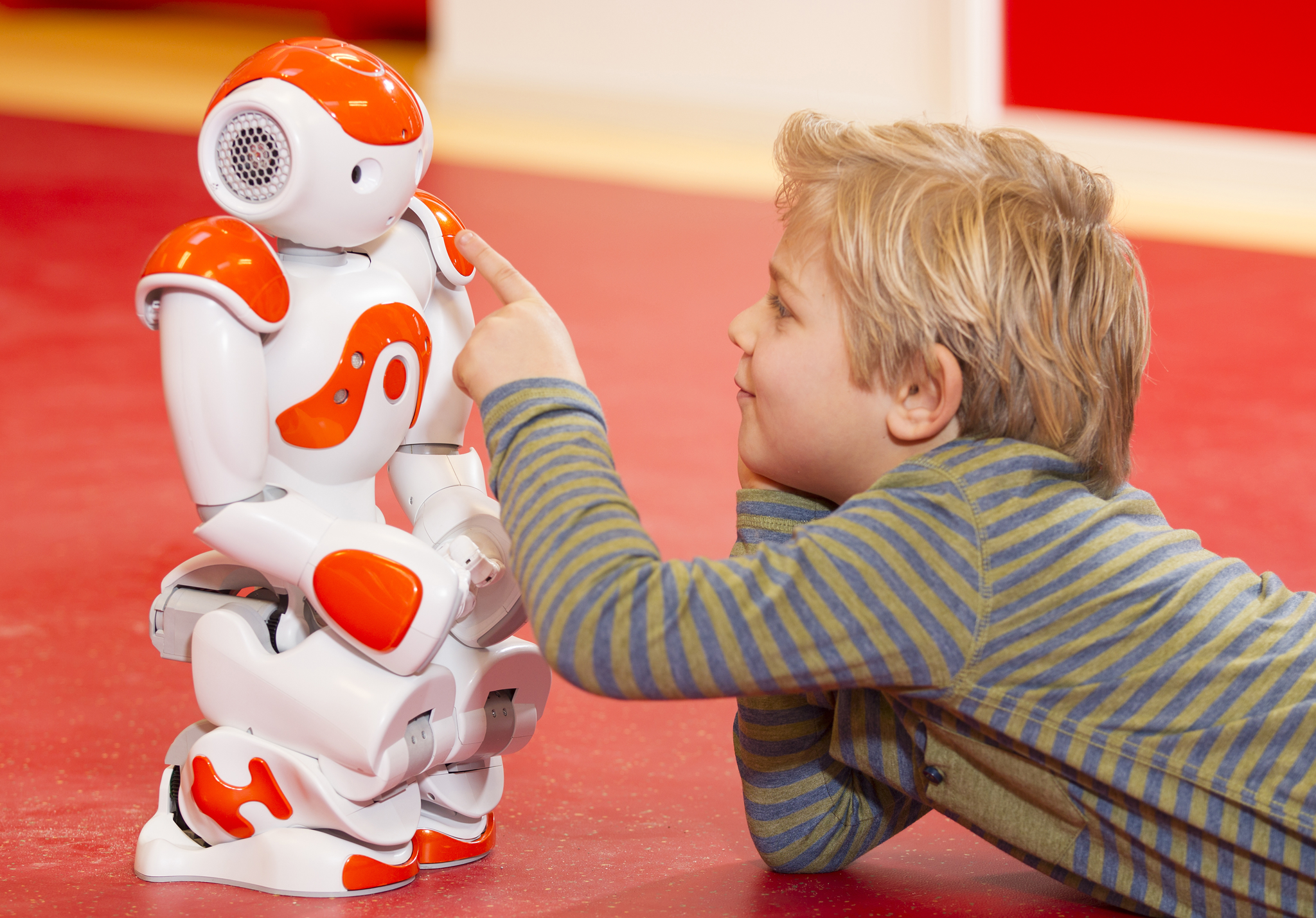Development of a robotic platform to aid new interactive strategies for children with impaired socioemotional functioning
Objective
Development of an emotion-sensitive robotic platform featuring video-based emotion recognition and multimodal analysis and evaluation of biosignals as visual feedback support for children on the autism spectrum. Acting as a social reaction and interaction partner between a child and their therapist, the new platform uses sensor-based technologies (facial expressions, psycho-physiological signals, language) to enhance participants’ communication skills. Direct, real-time feedback from the robot helps children learn to correctly gauge others’ feelings, as well as become aware of their own emotions.
The planned open framework and interface design of the platform mean that other use cases are conceivable, too, such as the treatment of dementia patients.
Background
Some things that most people do entirely at the unconscious level pose enormous challenges for autistic children: correctly recognizing and interpreting the emotions of the person they are interacting with and responding accordingly. Using robots as an interactive communication tool in therapy allows children on the autism spectrum to get the help they need early on.1
The joint ERIK project therefore aims to develop a robotic platform that addresses new interaction strategies in treatments for children with impaired socioemotional functioning, such as those on the autism spectrum.
----------------------------------
1 Cabibihan et al. “Why robots? A survey on the roles and benefits of social robots in the therapy of children with autism.” Int J Soc Robot 5.4 (2013): 593-618.


